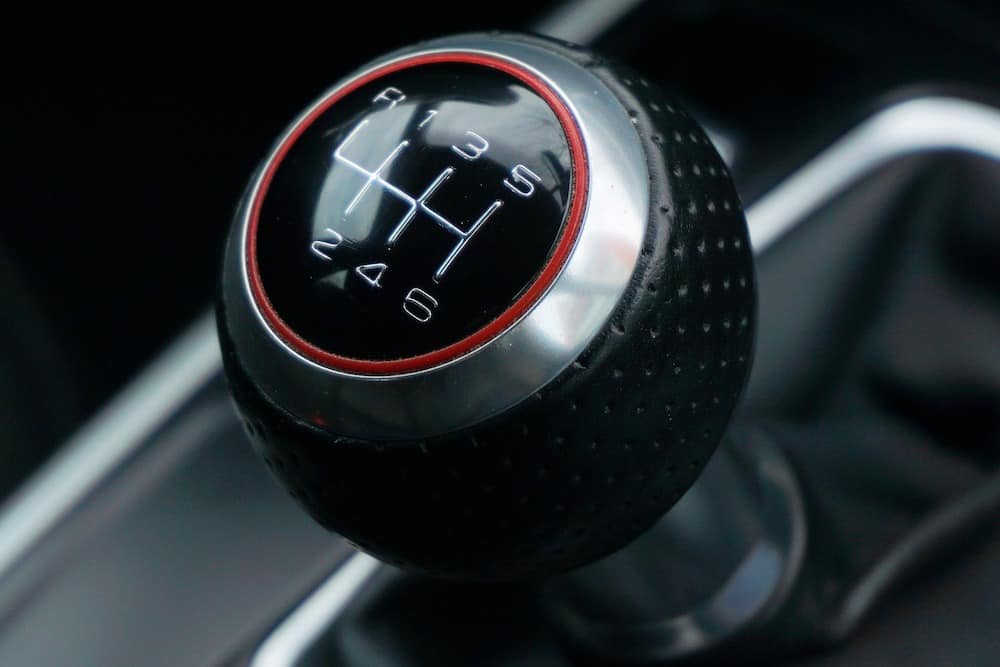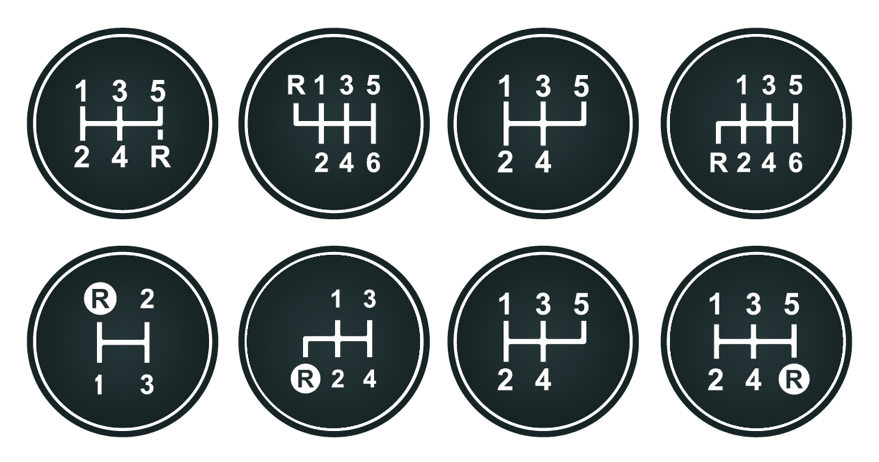Nowadays fewer people know driving a stick shift than say ten years ago. Automatic transmissions are so popular and easy to use. Why learning how to drive a manual car then? Reasons vary from personal preference to the ability to drive high-performance cars whatever transmission is installed.
The objective of this manual car driving guide is offering you a quick reference on how using these enjoyable gearboxes. Read on:
A word of caution before starting, it’s highly advisable to follow this guide with your car on level ground with no other vehicles or obstacles nearby.
1. Press the clutch
Best practices indicate that even before turning on the car you should press the clutch (far left pedal) to the floor. This action sets the gearbox in “neutral” while maintaining your left foot pressing the clutch.
2. Check the lever is in neutral (center)
With the vehicle shut off check the position of the stick. It should be at the center (neutral), but if not then apply enough pressure to release the gear. You may need to push or pull the stick depending on the gear.
3. Start the engine
Still with the foot pressing the clutch pedal to the floor start the engine. This ensures that the gearbox is in neutral. This manual car driving guide will focus on security above all else. That’s why even if you did step 2, is advised holding the clutch pedal (especially if you are new) because this prevents accidents.
4. Press the brake
Now using your right foot press the brake pedal. Remember, you are still holding the clutch pedal with your left foot. This manual car driving guide assumes that you are willing to learn how to drive correctly and that implies using both feet at this point.
5. Position the gear shifter
It’s time to position the stick into first gear. Depending on your vehicle the first gear is usually located in the top left corner or the bottom left corner. However, there are up to eight different stick shift patterns. Our manual car driving guide can only bring you a picture for your reference but is your responsibility to read the owner’s manual and find out the correct one.
6. Release the foot from the brake
You are almost there. Release your foot from the brake pedal. Since this manual car driving guide assume you are on level ground, you should not experience any movement (yet).
7. Slowly release the clutch pedal
This is arguably the toughest step of all. Learning how to coordinate your left foot (still pressing the clutch pedal) with your right feet that now should start pressing the accelerator pedal isn’t easy. Take this step with patience. Once again, isn’t easy. No one urges you to get it at the first opportunity.
That said, you need to “balance” the movement of your left foot that should be releasing the pressure on the clutch pedal with your right foot that is slowly start pressing the accelerator pedal. One going up and the other going down. Slowly. Don’t panic if the engine stalls and shut down suddenly. You will need some practice in finding out the “sweet point” where the engine revolutions start decreasing calling for acceleration.
8. Slowly press the accelerator
At a certain point, you will have released the clutch pedal entirely. The car is moving! Now you need pressing the accelerator pedal as you would do with any other car. You are in first gear, that means you will need to change to second gear very soon. First gear is good for defeating the initial car inertia and start moving.
9. Changing gears: Upshift
The second toughest step is learning when is the right time to change gear. Since you are still learning the advice of our manual car driving guide advice is focusing on upshifting gears each time you reach the 2500-3000 RPM. That’s a safe bet regarding the optimal point.
- Assuming you are still in first gear and reached the 2500 threshold then you will need pressing again the clutch pedal using your left foot.
- You will hear the RPM dropping as a consequence of pressing the clutch (you are in neutral again).
- Disengage the first gear and position the stick on second gear (during this process your foot should be still pressing the clutch).
- Release the pressure from the clutch as you did before (slowly). Don’t worry, while the car is moving it’s much easier.
- Resume your acceleration as necessary.
10. Changing Gears: Downshift
Downshifting is not hard if done correctly. For the purpose of this manual car driving guide, we advise you to rely more on brakes than downshifting while you gain experience.
- Assuming you are still in second gear and want to downshift then reduce your speed first using the brakes or letting the car slowing down on its own.
- Using your left foot press the clutch pedal (the engine will drop RPM as usual).
- Disengage the second gear and position the stick on first gear (during this process your foot should be still pressing the clutch).
- Release the pressure from the clutch very slowly. As you are new with manual transmissions put special attention to engine RPM. If you notice they are dangerously increasing close to the “red” zone then you need to re-apply the clutch and uses the brake pedal to reduce speed even further. With practice, you will learn how to decide how slow is enough.
- As you release the clutch pedal you will feel how the car starts slowing down. Congratulations you are “braking” with the transmission.
11. Braking
There are two different types of braking when you drive a manual transmission. First is the “normal” braking that consists of pressing the brake pedal just as you do with an automatic transmission. Depending on what gear you are, you will have a bigger or smaller speed margin to brake without using the clutch. Then comes the second type of braking. If you go beyond the speed margin allowed by the gear the car will start stalling. That is a clear indication that you need to downshift using the procedure explained above.
Enjoy the experience
Driving a stick is not for everyone. But if you are the kind of person that finds it rewarding then you will surely enjoy the experience of controlling RPM and “feeling” how the engine is talking you.



